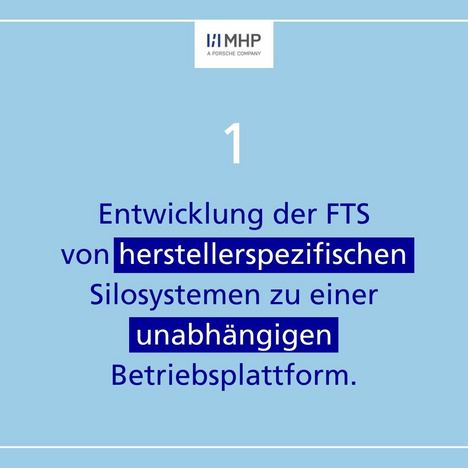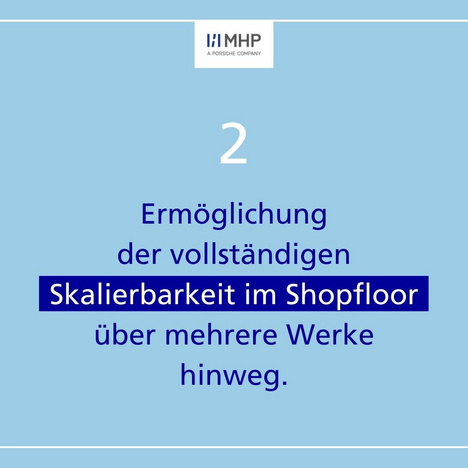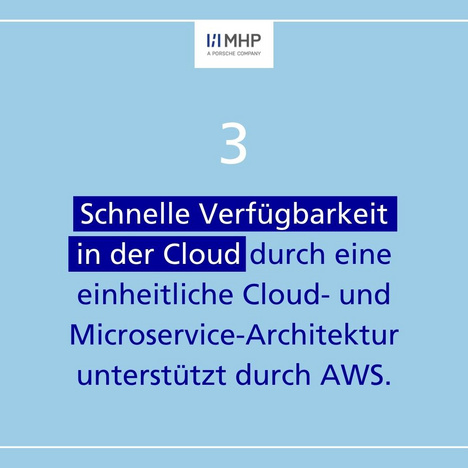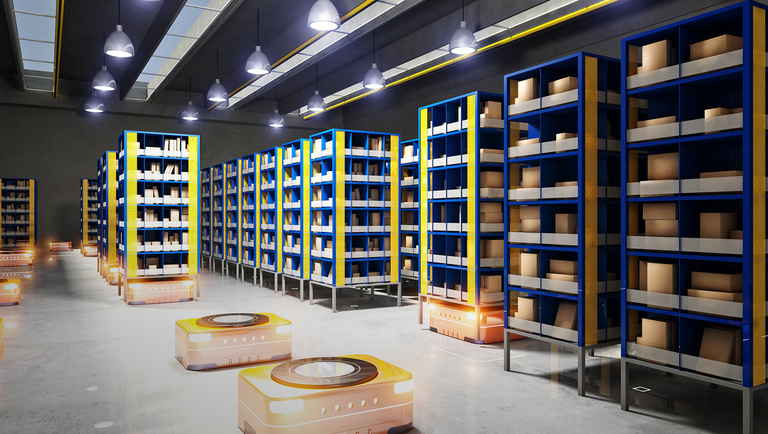
- Blog
- Published on: 06.09.2022
- 3:29 mins
FleetExecuter: How to Automate Your Mobility on the Shop Floor
AGVs and FleetExecuter: Automizing Mobilization
From bending to cutting, industrial companies have automated their immediate production steps to a large extent over the past 40 years. To do this, they have followed the principle of an automation pyramid: Instructions are transmitted from the ERP system to the shop floor, and data on the current situation flows back from the shop floor to the ERP system. The results of this development are impressive. Integrating many machines and systems has increased the effectiveness and efficiency of the production processes immensely. However, this also means that the potential in production itself has been largely exhausted. In any case, any further gains in automation will take a comparatively large effort. The situation is different for intralogistics as a whole. This is an area where people still control the vast majority of vehicles. So it’s time for automation to be mobilized.
The challenge of interoperability
Until a few years ago, this hardly seemed feasible. Now there is a whole range of automated guided vehicles (AGVs) that use sensors to navigate safely through shop floors and warehouses. In fact, both the supply and demand sides of the AGV market are growing rapidly at the moment. To date however, the lack of interoperability has been an obstacle to the development of the market as a whole and a challenge for each individual user company. The vehicles of almost every manufacturer can only be controlled using the respective manufacturer’s own software. So if companies want to use AGVs from different suppliers – which really should be the norm due to different technologies and capabilities – they have to operate several master controllers at the same time. This means an increased organizational and operational input from the companies. Not to mention, even if several master controllers from different manufacturers were used, consolidated control of all AGVs as a fleet is almost impossible. In addition, user companies become heavily dependent on manufacturers if their hardware is only compatible with their own software.
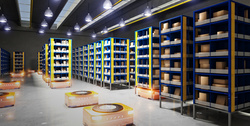
Standardization and centralization
In this respect, it’s not surprising that both standardization of the interfaces between AGVs and master controllers, and centralization of the master controller for the entire fleet are a high priority for users. In terms of standardization, the VDA 5050 communication interface is a real step forward. The first version of the protocol description was published as a draft in August 2019. Version 2.0 appeared in February 2022. A number of allocations in Europe are already based on this still fairly new standard. Even the first AGV manufacturers in the USA are taking VDA 5050 into account. Basically, the interface is being discussed worldwide by various providers of vehicles and fleet management software. In the foreseeable future, this will mean the vast majority of AGVs will be able to be integrated into existing intralogistics processes via a plug-and-play approach.
FleetExecuter as a Director
FleetExecuter, which we developed, can assume the role of a central master controller. It focuses on essential aspects such as:
• Manufacturer-independent control (VDA 5050),
• Scalability (Pilot up to Full Plant),
• Cloud, On Premise or hybrid operation,
• simulation and emulation.
The cloud-enabled software uses the VDA 5050 standard, receives data from the various AGVs and the assets on the shop floor, and the higher-level instance, uses an algorithm to calculate transport orders optimized for a specific destination, then assigns these to the AGVs of the various manufacturers. Various parameters are taken into account when calculating the best possible assignments: for instance, the utilization costs of routes, the position of the individual AGVs and the respective battery charge states. In addition, FleetExecuter takes control of the AGVs in a room. The highlight here is an intersection controller that also observes priority rules so that urgent orders can be given priority. Functions for statistics and energy management are also advantageous, providing daily optimizations. In the future, functions for error management will be added. The software can also be used to exploit scaling potential because only layout adjustments and the connection to adjacent ERP, warehouse management or production planning systems are required for the rollout.
Faurecia: ROI in 18 months
One of our FleetExecuters is in use at the automotive supplier Faurecia at a plant in Plzeň in the Czech Republic. There, the solution now coordinates ten AGVs that deliver different seat frames directly to the assembly line in accordance with the goods-to-person concept. A cycle time of 60 seconds and sequencing must be adhered to. With FleetExecuter, MHP has increased the efficiency of the overall process by almost 20 per cent. This enabled Faurecia to achieve a return on investment in less than 18 months.
